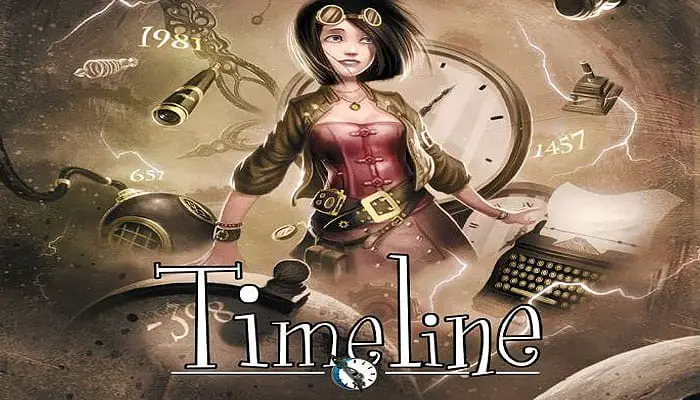
« Was the can opener invented before or after the light bulb? Well, after glasses for sure... right? And was it created at some point between the telegraph and the telephone?»
In Timeline, these are exactly the kind of questions you'll ask yourself each time you try to play one of your cards. There's only one objective here: be the first player to play all of your cards correctly.
Components
109 cards, each with the name of an invention and its image on one side, and the same information plus that invention's creation or discovery date on the other side.
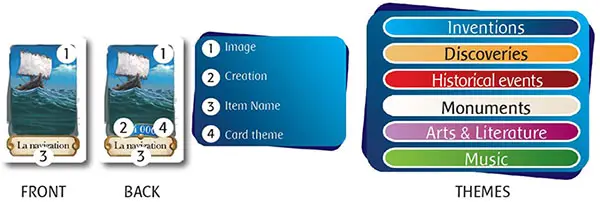
Object of the Game
To be the only player with no cards remaining in front of you.
Setup
-
The players settle around the playing area.
-
The youngest player is the "first player".
-
Shuffle the cards. Make sure that the "date" sides of all cards are hidden.
-
Each player is dealt the number of cards indicated in the chart below ("date" side down) and places them in front of him or her. Under no circumstances can the player check the back of the card (the "date" side)!
Number of players 2 to 3 4 to 5 6 to 8 Number of cards 6 5 4 Experienced players are free to agree to start the game with a different number of cards, based on their level of experience with the game. It is often more challenging to have more cards in front of you.
-
The card pile is left in the middle of the table.
-
Turn over the first card of the card pile so the "date" side is visible. You will start building the Timeline with this card, trying to fit the items and discoveries you have in front of you.
-
You are ready to begin play!
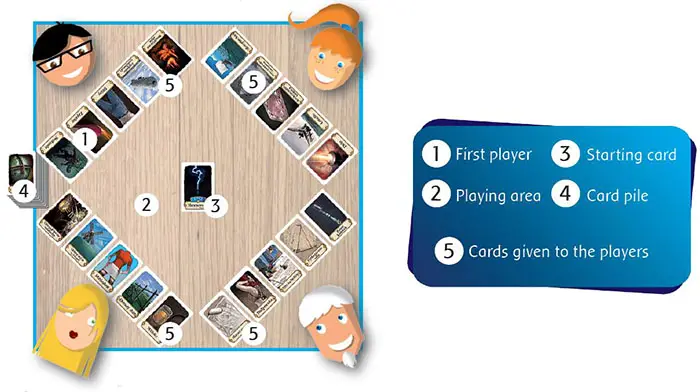
Game Play
The game is played over a number of rounds. In each round, the players take turns to play, going clockwise. A round is complete only after all players have taken a turn. To begin the game, the first player must play one of his or her cards next to the starting card (the one placed in the middle of the playing area during set-up):
If he or she thinks that the invention or discovery on the card was made before the starting card, he or she places the card to the left of the starting card.
If he or she feels that the invention or discovery on the card was made after the starting * card, he or she places the card to the right of the starting card.
After a card is played, turn it over so the "date" side is showing, and check that the card has been placed properly in the chronological timeline:
If the card was placed properly, it is left there, "date" side up, and the player's turn is over.
If the card was not placed properly, it is returned to the box. The player must draw the first card from the card pile and place it in front of him or her ("date" side down), next to his or her other cards.
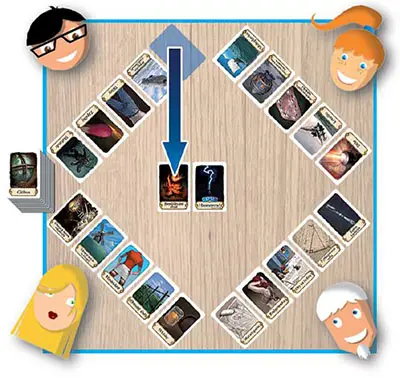
Now the next player (to the first player's left) can begin his or her turn.
If the first player has played his or her card properly, the second player can now IK choose between three spaces in which to place his or her card: to the left of the two cards already played, to the right, or in between them.
If the first player hasn't played his or her card properly, the second player only has two options (to the right or left of the starting card).
If the second player is able to play his or her card properly, it remains on the table * with the "date" side visible. The timeline is simply rearranged so that a space is left between each card.
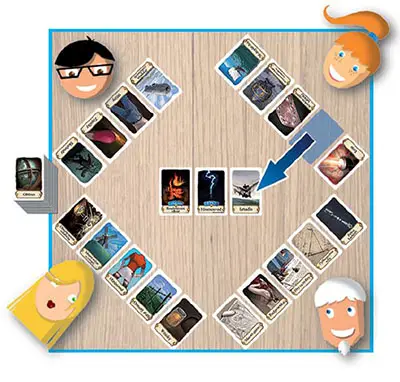
Now it's the third player's turn.
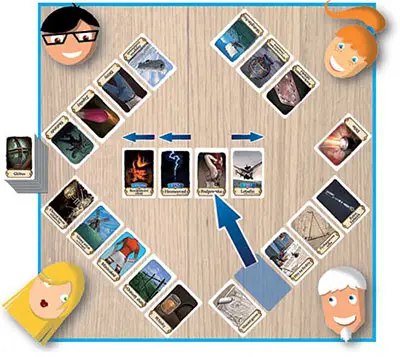
If the first two players have played their cards properly, the third player can now W choose between four spaces... and so on.
Players continue taking turns in this way until one or more players have successfully added all of their cards to the Timeline.
Special Rule
During the game, it is possible that a player will play a card with the same date as a card that has already been played. In this case, he or she must play the two cards adjacent to one another. The order of these two cards does not matter.
End of the Game
At the end of each round, check to see if any players no have no cards in front of them (in other words, was any player able to play his or her last card correctly):
- If no one was able to play his or her last card correctly, start a new game round.
- If only one player has no cards left, that player immediately wins the game!
- If more than one player correctly plays their last card in the same game round, the game continues.
All players who played their last cards remain in the game and the other players are eliminated. The remaining players each draw one card from the card pile, and they continue playing until there is only one player in a game round who plays his or her last card correctly!
In Short
When it is your turn, you must try to play one of your cards in the correct "point in time". If you play the card correctly, you will have one less card in front of you. If you play incorrectly, your card is returned to the box and you must draw a new one. If you are the

Continue Reading


